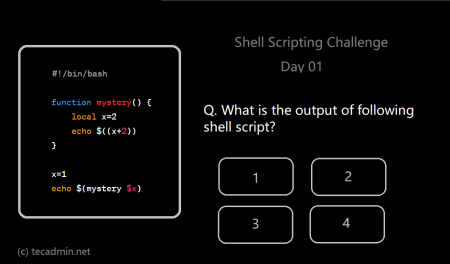Bash, the Bourne Again SHell, is one of the most widely used shell scripting languages due to its compatibility with Unix and Linux systems. It offers a host of built-in functions and variables that make scripting more efficient and less error-prone. One such variable is `$?`, an integral part of error handling in Bash scripting. This special variable holds the exit status of the last command that was executed, which is crucial for controlling the flow of scripts based on command success or failure.
1. Understanding Exit Statuses
Before we delve into the specifics of `$?`, it’s essential to understand the concept of exit statuses in Unix-like operating systems. Whenever a command or a program finishes executing, it sends an exit status to the shell. This exit status, an integer, signifies whether the command was successful or not.
By convention, an exit status of 0 means success, while any non-zero value (1-255) indicates an error. Each non-zero exit status can correspond to a different type of error, allowing the script to take various corrective actions based on the particular error encountered.
2. The Role of $?
The special shell variable `$?` captures this exit status. After each command execution, you can immediately access the exit status through `$?`. This variable is especially handy in conditional statements, where the success or failure of a command can determine which path the script should follow.
For example, consider a script where we want to create a directory. We could use `$?` to check if the directory creation was successful:
1 2 3 4 5 6 7 | mkdir /path/to/directory if [ $? -eq 0 ] then echo "Directory was created successfully." else echo "Failed to create the directory." fi |
In the example above, if the mkdir command succeeds, `$?` will be 0, and the script will print a success message. If mkdir fails (perhaps because the parent directory does not exist, or the script lacks the necessary permissions), `$?` will hold a non-zero value, and the script will print an error message.
3. Advanced Usage
The exit status can also be used directly in conditions without referring to $? explicitly. The shell allows commands to be chained together using logical operators && (AND) and || (OR). The && operator runs the next command only if the previous command was successful (exit status 0), whereas the || operator runs the next command only if the previous one failed (exit status non-zero).
Here’s how we might rewrite the previous script using these operators:
1 | mkdir /path/to/directory && echo "Directory was created successfully." || echo "Failed to create the directory." |
This line does the same as the previous script but in a more concise way.
4. Using Exit Statuses in Functions
Just as commands and programs return exit statuses, so too can functions within your bash scripts. This further increases the power of `$?`. When a function completes, it can return an exit status to indicate success or failure, or to signal specific conditions to the rest of the script.
Here’s an example of a function that uses an exit status:
1 2 3 4 5 6 7 8 9 10 11 12 13 14 15 16 17 | function check_directory { if [ -d "$1" ] then return 0 else return 1 fi } check_directory /path/to/directory if [ $? -eq 0 ] then echo "Directory exists." else echo "Directory does not exist." fi |
In this example, the check_directory function checks if a given directory exists. It returns an exit status of 0 if the directory exists and 1 if it doesn’t. The script then checks `$?` to print an appropriate message.
5. Capturing and Acting Upon Specific Exit Statuses
The non-zero exit statuses can provide detailed information about the kind of error that occurred. For example, in some commands, an exit status of 1 might indicate a minor problem, while a status of 2 indicates a severe error. By capturing and acting upon these specific statuses, your scripts can handle different error situations in different ways.
Here’s an example of how you might use specific exit statuses:
1 2 3 4 5 6 7 8 9 10 11 12 13 14 15 16 | command case $? in 0) echo "Command succeeded." ;; 1) echo "Command failed due to minor problem." ;; 2) echo "Command failed due to severe problem." ;; *) echo "An unknown error occurred." ;; esac |
This script uses a case statement to handle different exit statuses in different ways. If the command was successful, it prints a success message. If the command failed with an exit status of 1 or 2, it prints an error message indicating the severity of the problem. For any other exit status, it prints a message indicating an unknown error.
6. Caveats and Considerations
While `$?` is incredibly useful, it’s essential to remember that it only holds the exit status of the last command executed. If you execute another command before checking `$?`, the exit status will be overwritten. Therefore, always check `$?` immediately after the command you’re interested in.
Additionally, bear in mind that not all commands and programs follow the 0-for-success and non-zero-for-error convention. Some may use different status codes or not use exit statuses accurately. Always check the man pages or other documentation of the commands you are using to understand what different exit statuses represent.
Conclusion
Understanding and using the `$?` variable is a fundamental part of error handling in Bash scripting. By effectively utilizing this variable, you can create more robust, reliable, and intelligent scripts that can handle a wide range of situations. Whether you’re a beginner just starting out with Bash or an experienced scripter looking to enhance your error handling, mastering `$?` will serve you well.



